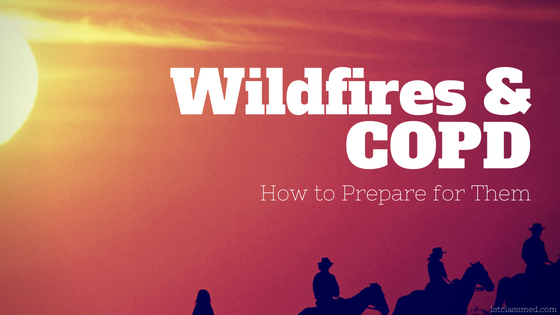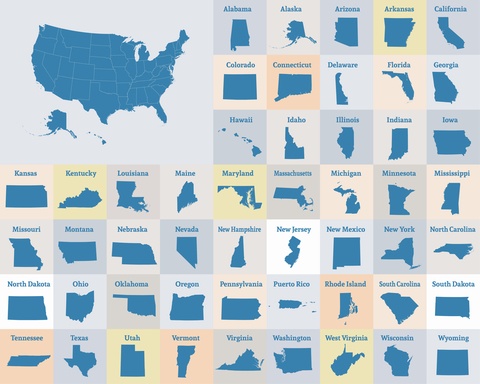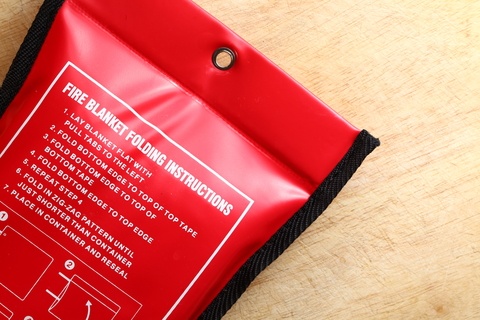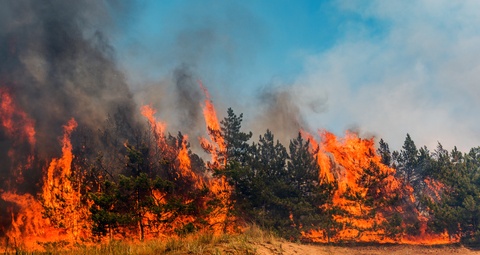
If you reside in the western part of the United States, you are at a higher risk for local wildfires due to dry air and high wind.
According to the National Interagency Coordination Center, as of 5:30 am MST on Monday, July 16th, there are 221 new small fires, 6 new large fires, and 34 uncontained large fires.
There are currently 6 uncontained major fires in the Rocky Mountain Area (which includes Colorado, Wyoming, South Dakota, Nebraska and Kansas).
The Great Basin Area includes Nevada, Utah, and part of Idaho, where there are currently 10 uncontained wildfires.
Of the 10 fires, they are relatively divided between the states.
The state of California has 6 uncontained fires, 3 in the northern part of the state and 3 in the southern part of the state.
The Northwest Area (Washington and Oregon) and the Southwest Area (Arizona, New Mexico, and part of Texas) have a total of 7 fires, 3 in the northwest states and 4 in the southwest states.
The Southern Area (part of Texas, Oklahoma, Arkansas, Louisiana, Mississippi, Alabama, Florida, Georgia, Tennessee, Kentucky, Virginia, North and South Carolina) only have 3 fires, two reside in Texas, one in is Florida.
The Eastern Area (Minnesota, Iowa, Missouri, Wisconsin, Illinois, Indiana, Michigan, Ohio, West Virginia, Pennsylvania, Maryland, Maine, New York, Vermont, New Hampshire, Massachusetts, Connecticut, New Jersey, and Delaware) currently has one fire in the state of New York, near Altona.

The Alaska Area has one uncontained fire, located near Chalkyitsik, AK.
In total, the current uncontrolled wildfires are costing the U.S. Government an estimated 216 million dollars for the efforts used to control the fire.
As you can see, there are fires almost everywhere, so being prepared no matter the state you are in can be beneficial to your safety.
Those with COPD can have a harder time breathing in the smoke filled air, even if it has dissipated it can cause harm or flare up for your lungs.
In order to be prepared for a wildfire, you need to have a better understand of how they happen and what damage they can do.
Preparing for a Wildfire:
Wildfires can start by people, or lightning which can make it possible to happen anywhere, such as forest, grassland or prairie.
They occur in areas of little to no rain, as well as high winds.
Fires can also cause flooding, breaking in gas or power lines, or a disrupting in communications and forms of transportation.
They can destroy your home and cause harm to people and animals, such as severe injury or death.
In areas of common wildfires, it is important to have an emergency kit, including water, N95 masks, fire blankets, emergency radio, first aid kits and flashlights.
When preparing your kit, make sure you get enough water for you and your family, and replace the bottles when they expire (normally 1 to 2 years) if they haven’t been used.
N95 masks can be found at your local hardware store or online, keeping them in the plastic they came in allows them to stay clean until you may need it.
N95 masks need to be certified by the National Institute for Occupational Safety and Health, they will protect you from dust and mold in the air.
They do not protect you against chemicals, gases, carbon monoxide, gasoline, asbestos or lead, so do not use them to protect you against any of those.
For those on oxygen, putting your nasal cannula under your mask is a great way to continue to get oxygen but prevent from breathing in any dust into your mouth.
Fire blankets can be found at many stores locally, or online like the N95 masks.
Though their name can lead you to believe you’re protected in all situations involving fire, it is to be used specifically for small fires.
Fire blankets are used in instances of a small fire, to put out a kitchen fire or to wrap around someone who may have caught on fire.
Though it cannot protect you from a large wildfire, it can help with small fires remaining after the fire.

Investing in an emergency radio can keep your family safe in a situation where you may have lost contact with the outside world (no phone connection or tv signal).
It is important to find a radio that can provide a “Public Alert” or “NOAA NWR All Hazards” logo on their packaging, as both of those allow you to get your local alerts.
Keep batteries updated in the radio, as having corroded batteries during an emergency is not ideal.
First aid kits can be found at nearly any store, small convenience stores, or large chain locations, as well as online.
A first aid kit can be used for many different situations, in any case, it is important to clean the wound before and after you do anything to it.
Make sure the first aid kit for your wildfire emergency bag is not used for other medical emergencies, as you may need the kit in its entirety.
Keep a spare first aid kit in your home, and one that will only be used in the emergency kit if needed.
Also pack a flashlight for every member of your family or anyone living in your home, make sure to replace batteries every year or every 6 months to prevent corrosion.
Keeping all the components of the kit in a backpack or an easy bag to carry will allow you to quickly grab it if there is an emergency.
You also may want to consider keeping it in an easily accessible spot for children and adults alike.
This will allow each member of your family to grab something you may need, and the person getting the emergency bag can access it easily.
You also need to bring your oxygen, any prescriptions, batteries, extra filters for your oxygen and extra nasal cannula.
Alcohol wipes are another important thing to bring with for your oxygen, to clean all equipment with.
You not only need to be prepared with all normal supplies, but any supplies for your oxygen supply.
Now that you have your kit assembled, it is important to know what to do in an emergency.
What to do:
Putting on your masks could be your first step, depending on your lungs and how close you are to the fire can decipher if you need to put the mask on right away.
If you are close enough to be evacuated, put on your mask, or if you see smoke, it is best to put your mask on.
If you are told to evacuate and cannot get out of your home, call 9-1-1 and give them your location.
Prepare for them to be delayed or not be able to reach you at all, try to make your location noticeable with lights and bright colored items.
Listen to the radio, to keep up on the current status of the fire, as well as possible evacuation instructions.

If you are in a location that has not been required to evacuate yet, but it is smoky out, go to a safe location inside or go to a community safe place where smoke can be lower.
If possible, you can also leave your town and go stay with family or friends who live further from the fire.
When the fire is done, or has passed your home and you have been told you are safe to return, be prepared.
Returning Home:
Water may not be safe to drink, so make sure you purchase water and food elsewhere.
Depending on the severity of the fire, there could still be hot patches in the ground, which can burn you or set off another fire.
Keep this in mind if you let your pets outside or if you have farm animals.
Connect with friends and family through social media to let everyone know you are okay.
Keep phone use to a minimum, as phone systems and lines are very busy after a disaster such as a fire.
Wear a N95 mask if you are wetting down any ash and debris near your home, though wetting down dust will lessen the particles, walking in dry debris can cause some dust to kick up.
According to Ready.gov, floods become a high risk after wildfires, as there is no vegetation to absorb the water, purchasing a flood insurance plan can save your home and land.
They also recommend documenting any damage with photographs and lists of your items that you have, and the things you may have lost in the fire.
Though wildfires can be scary for anyone, it is very important to be prepare if you have a respiratory disease.
Fires can cause more damage to those with respiratory diseases as the smoke can make it very hard to breathe, on top of already struggling to breathe.
Being prepared and having a plan for a wildfire can save you time and energy when a disaster occurs.
Here's a guide from the Environmental Protection Agency for more helpful information!



